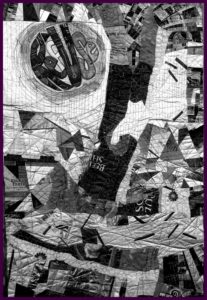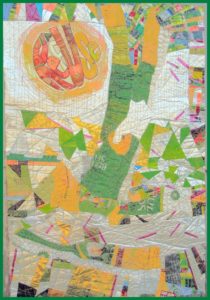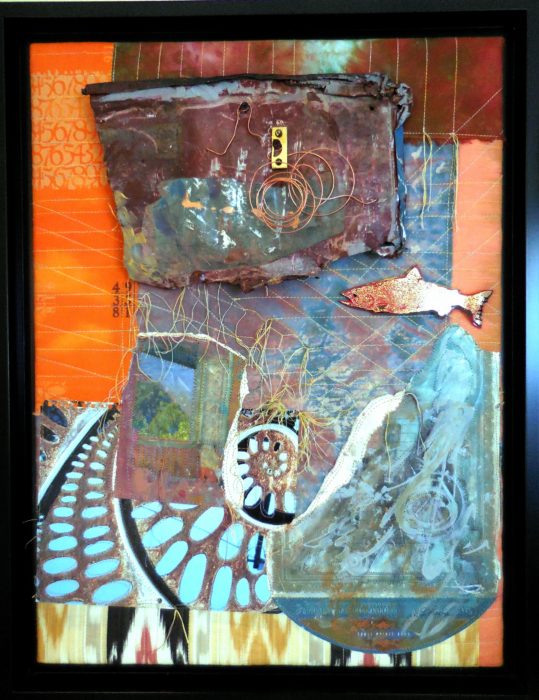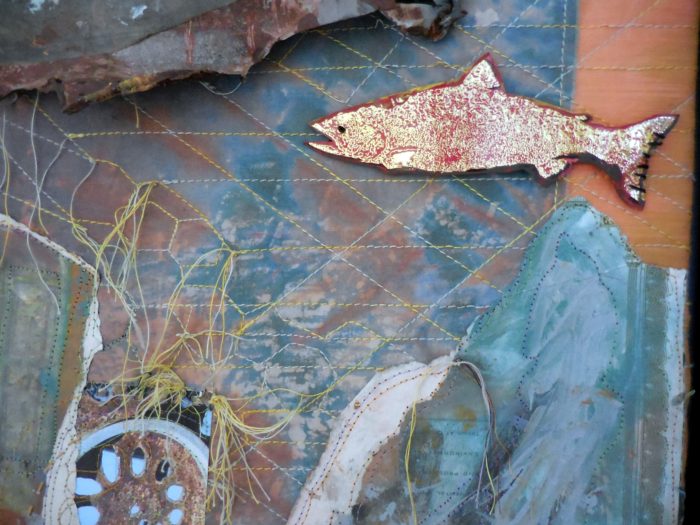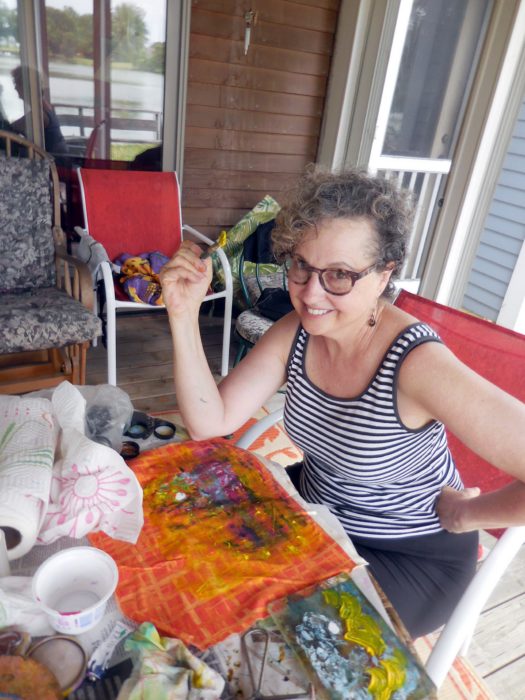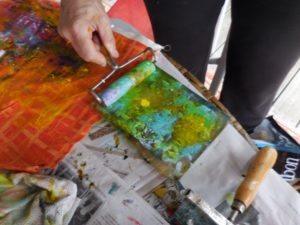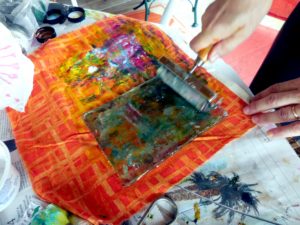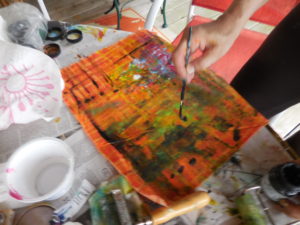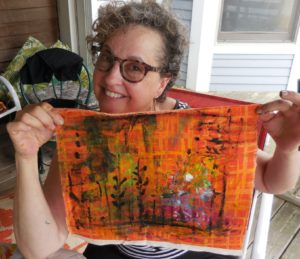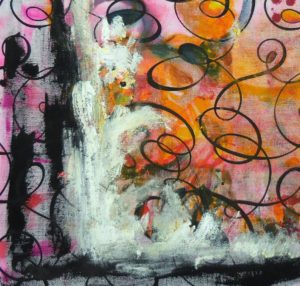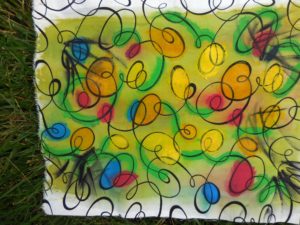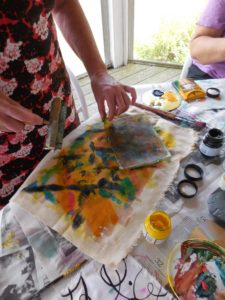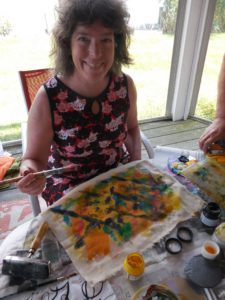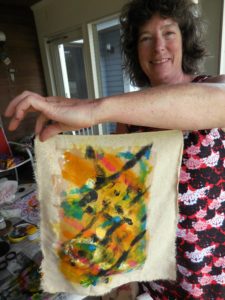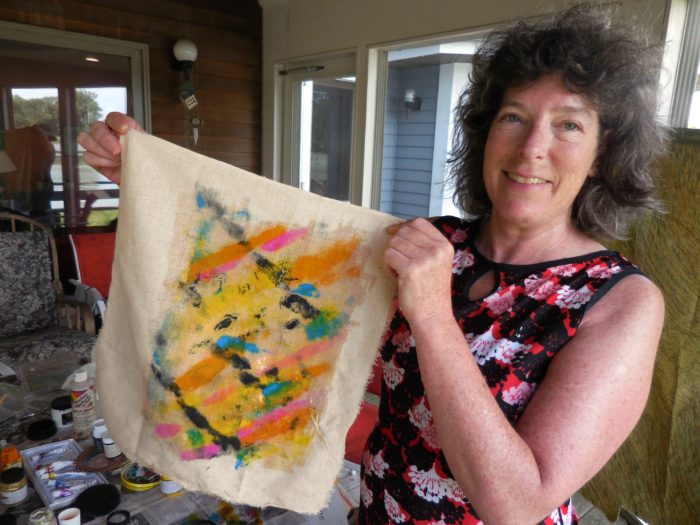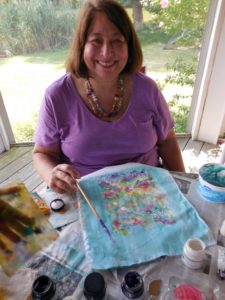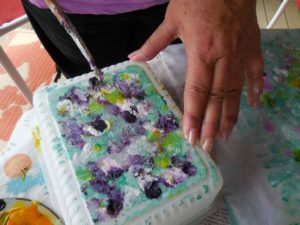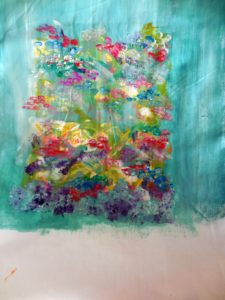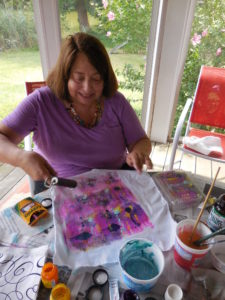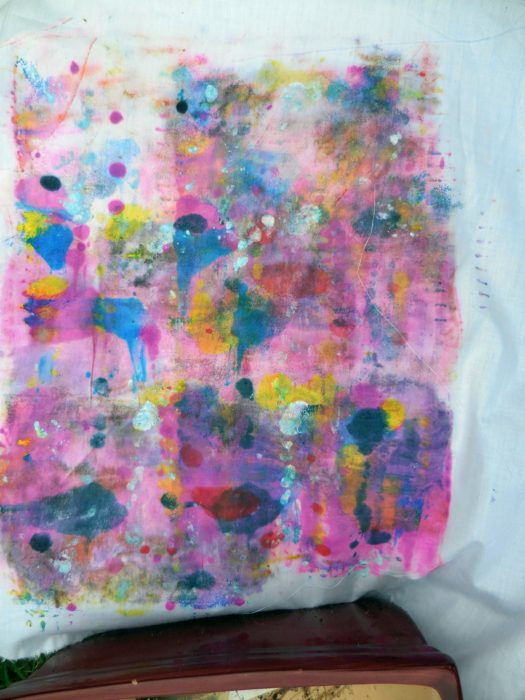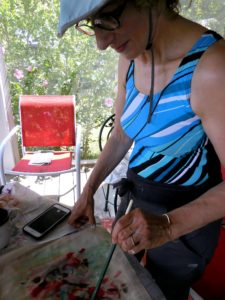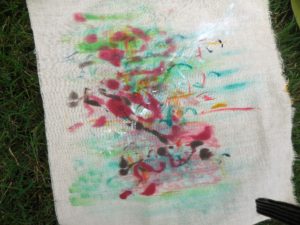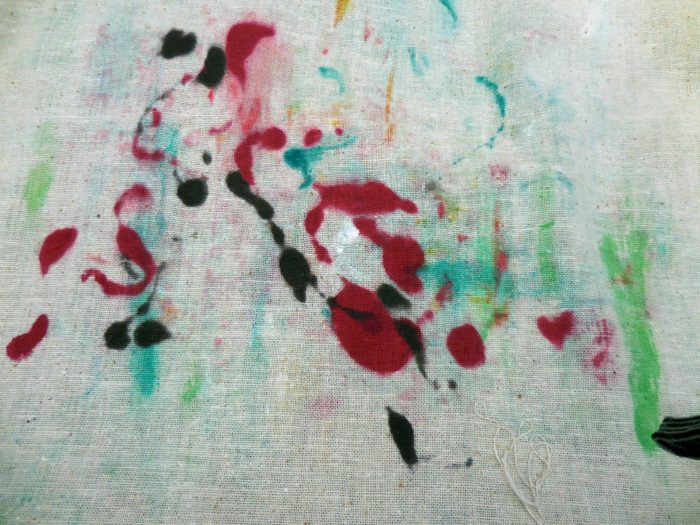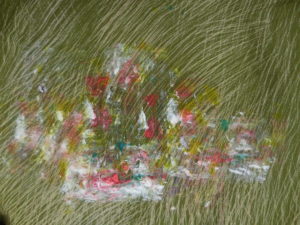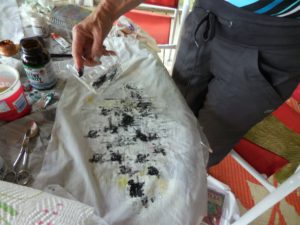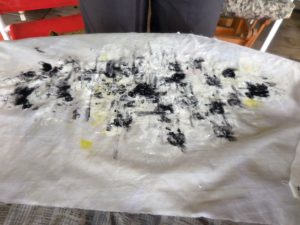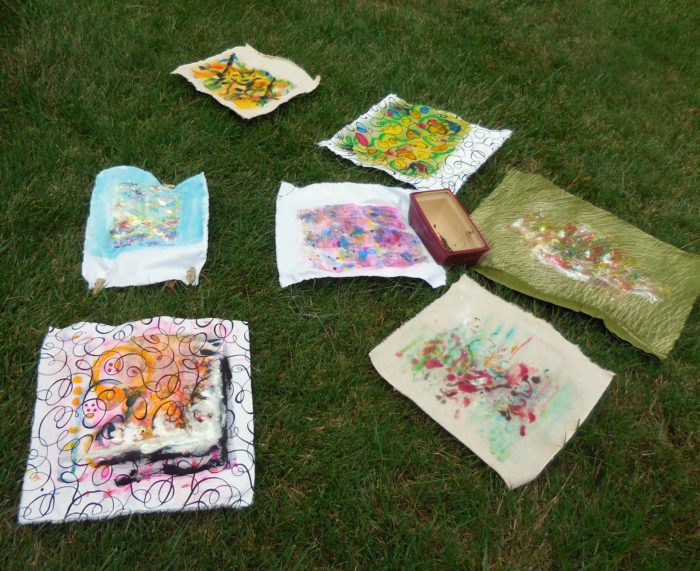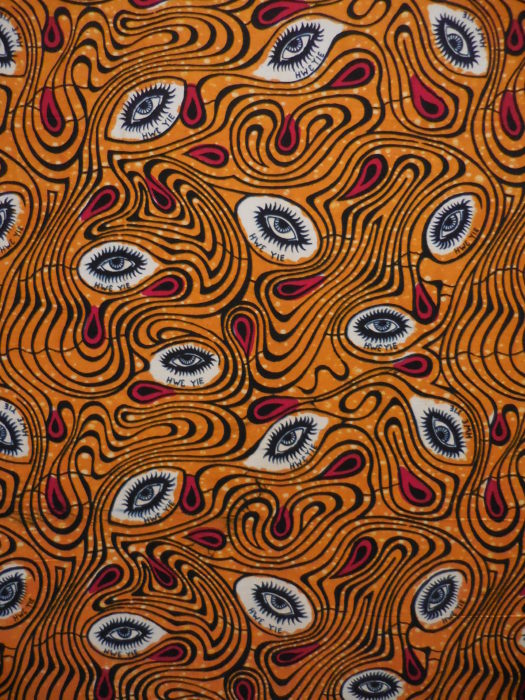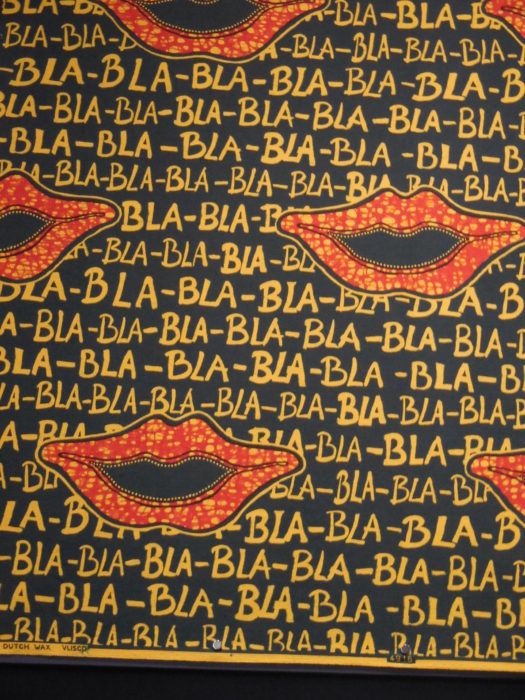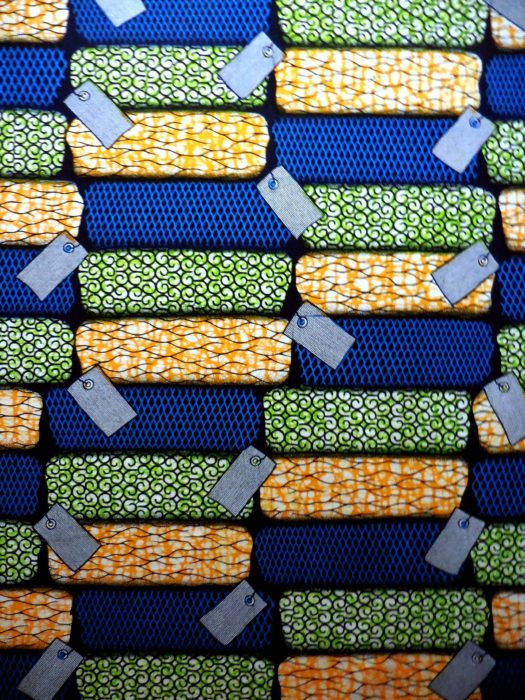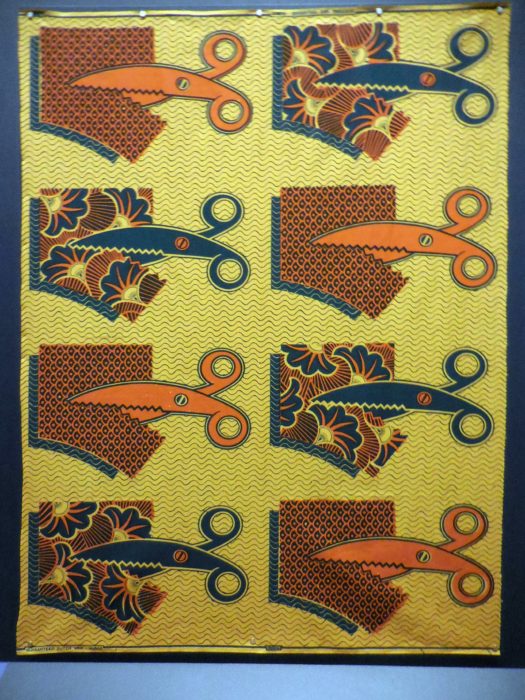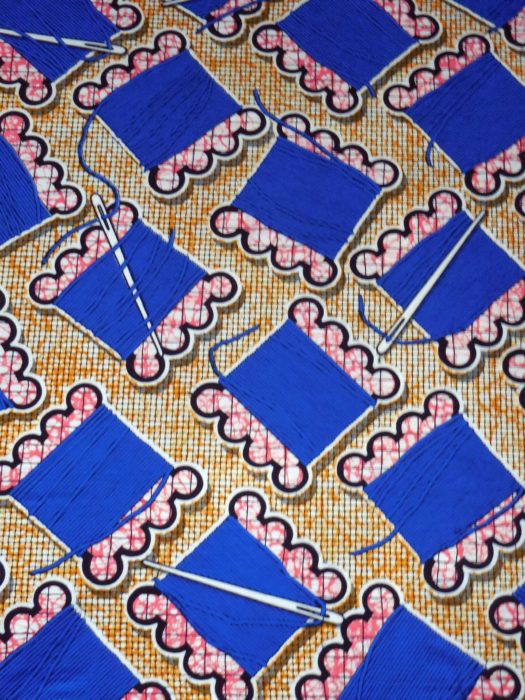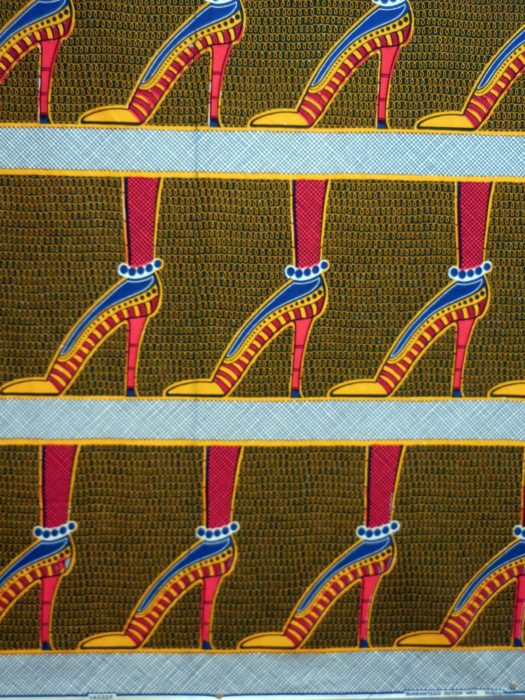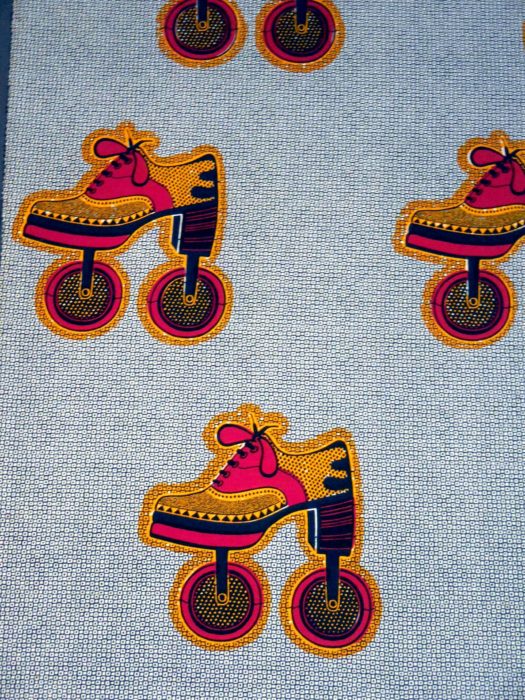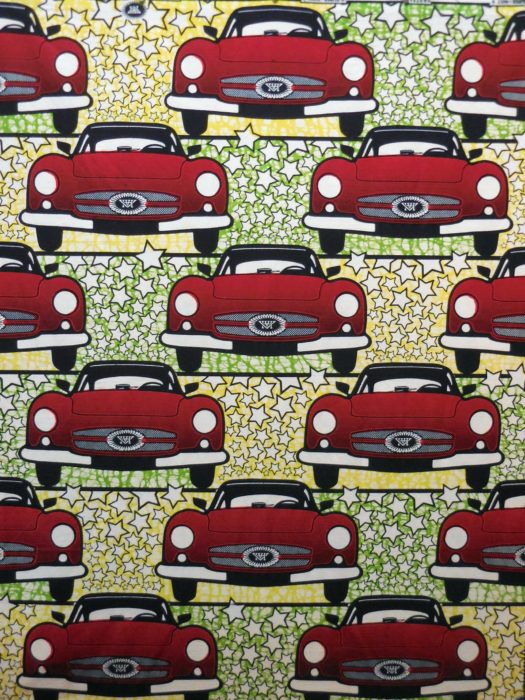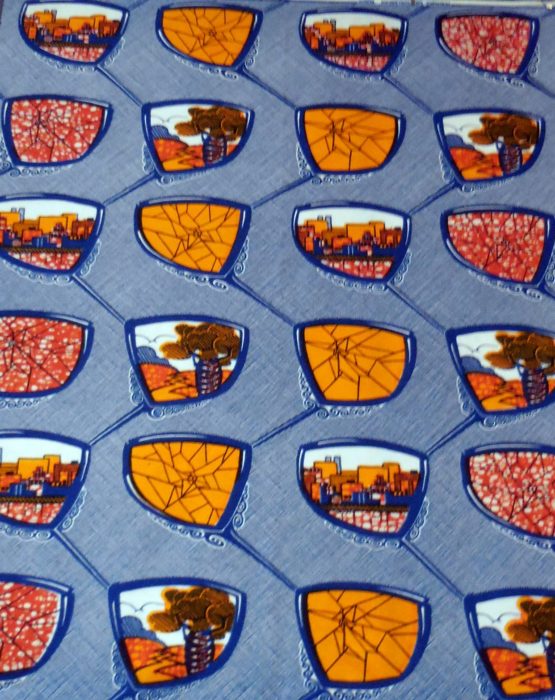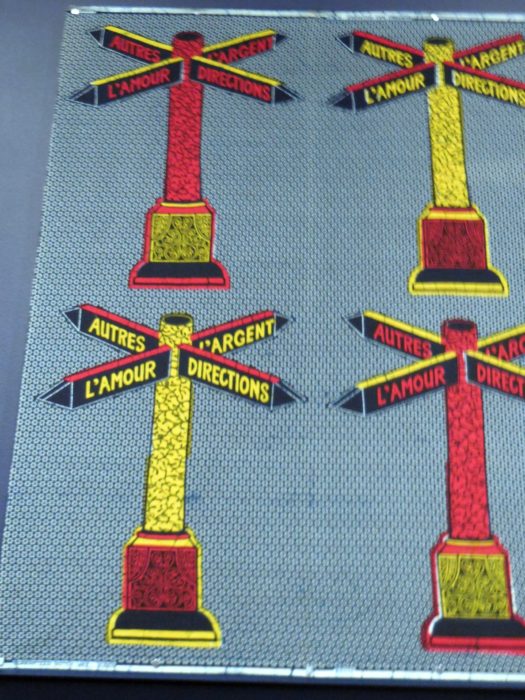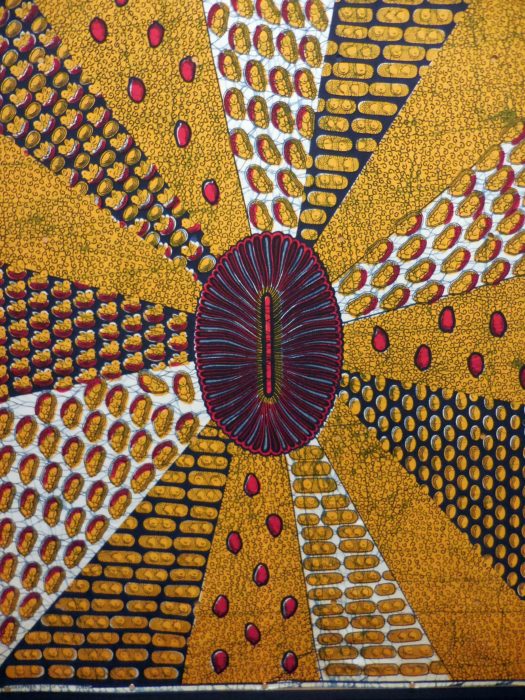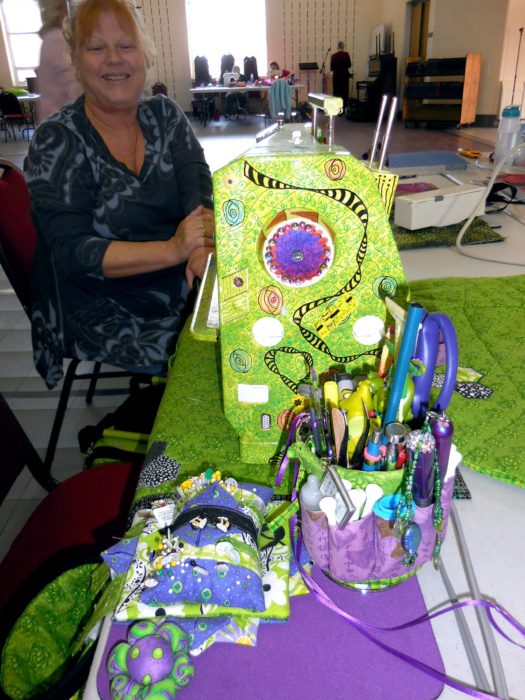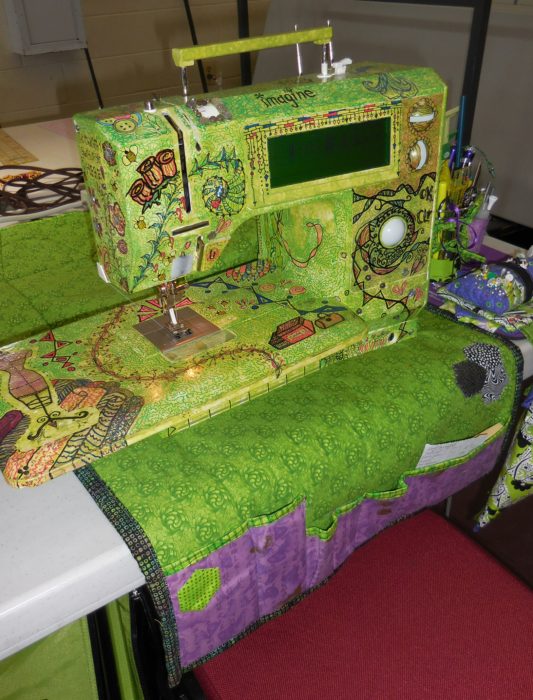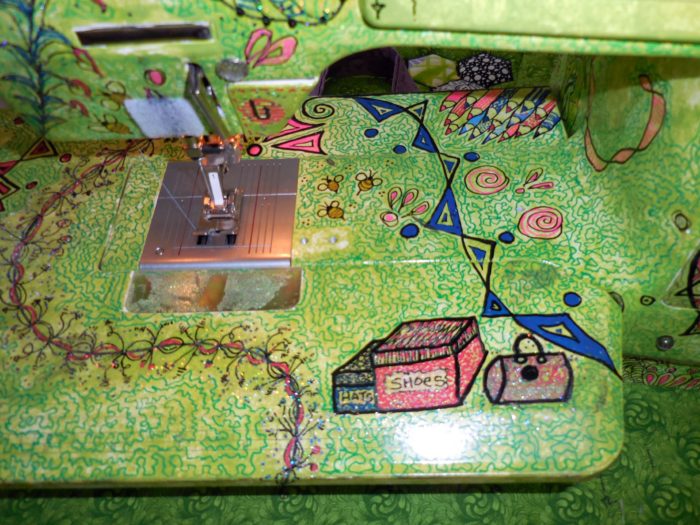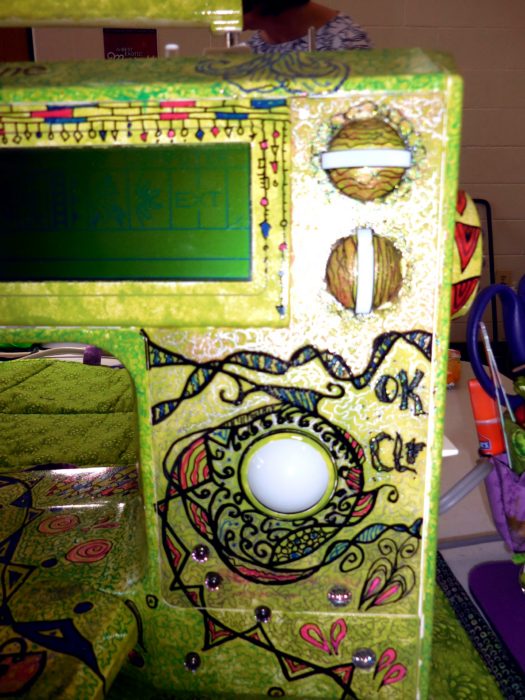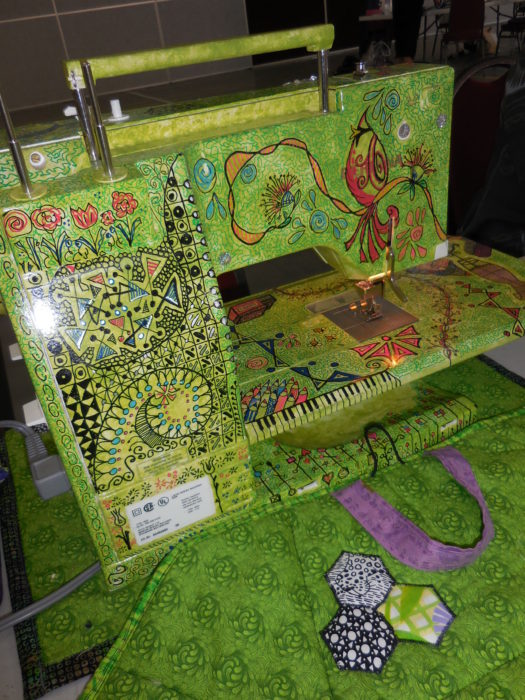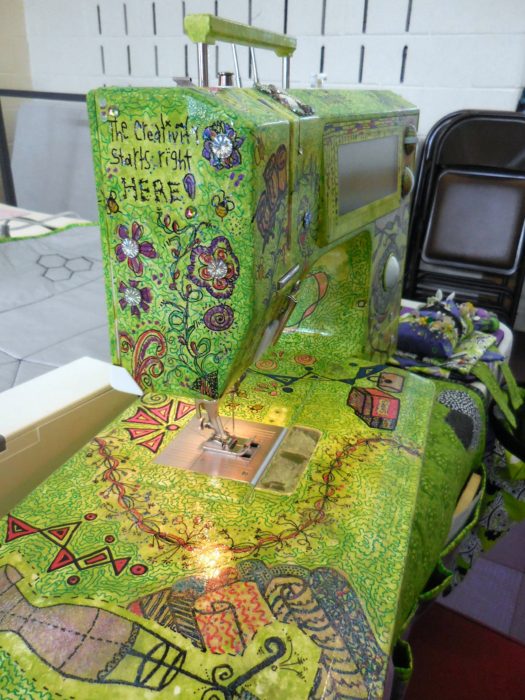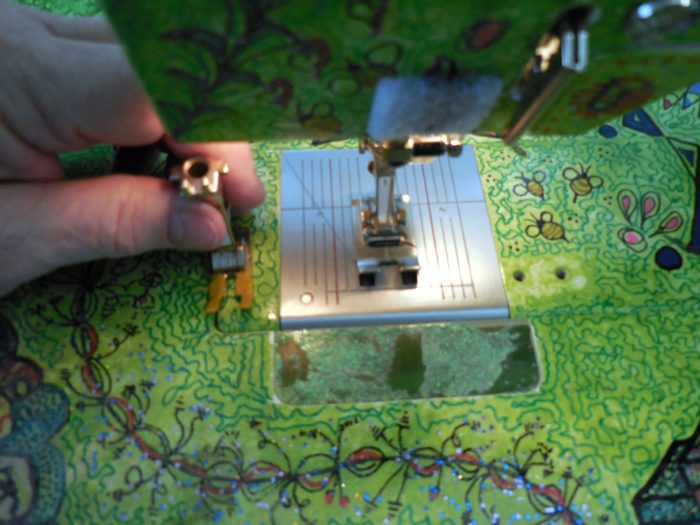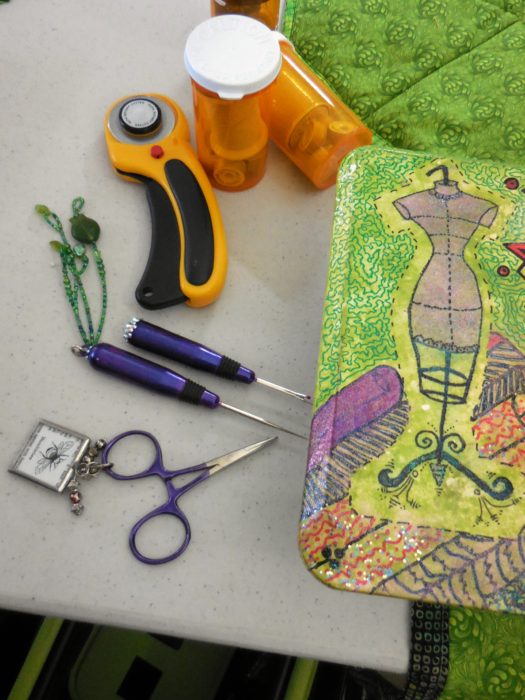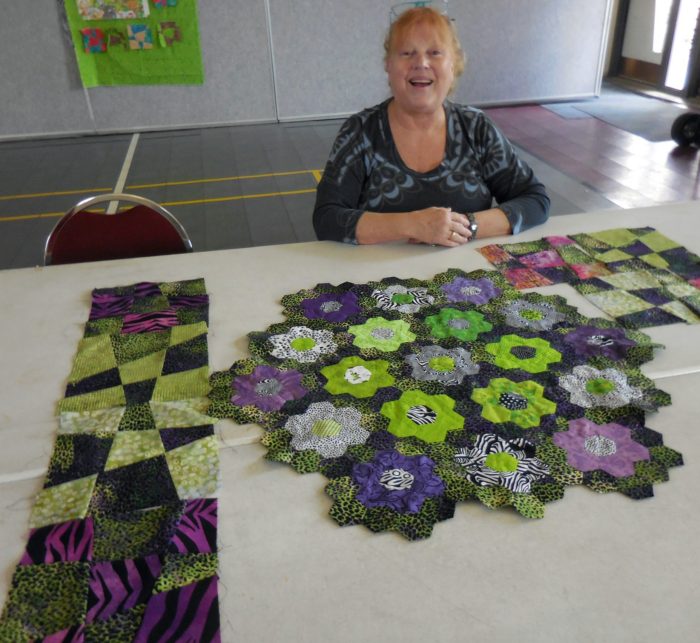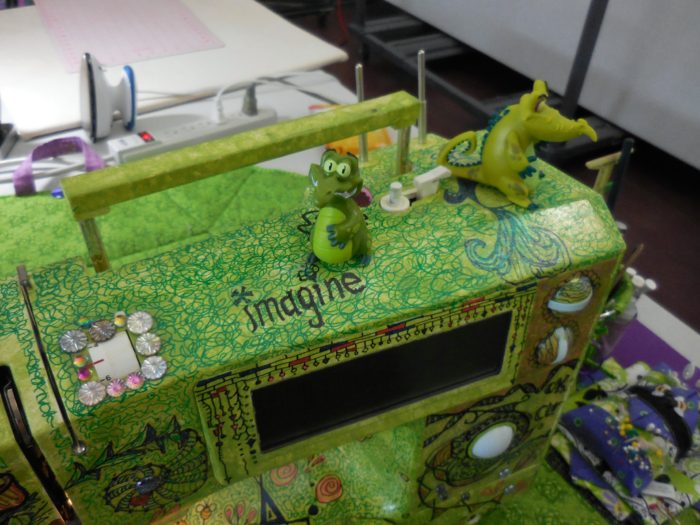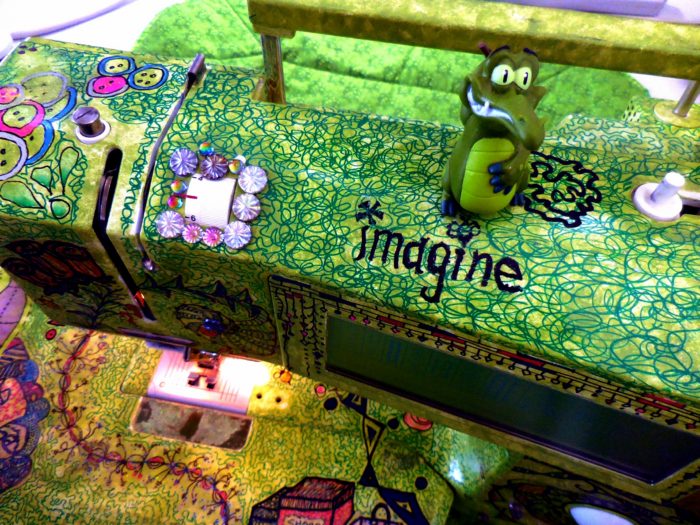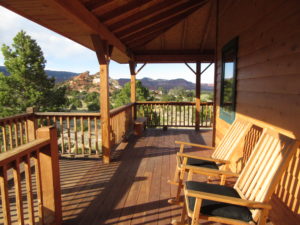 Just when I least expected it, a most relaxing, wonderful haven that is the Muley Twist Inn gave me an unexpected quilt fix.
Just when I least expected it, a most relaxing, wonderful haven that is the Muley Twist Inn gave me an unexpected quilt fix.
The husband and I arrived here after a long day hiking in Capitol Reef National Park. The inn Carl picked out is off the beaten track, outside Teasdale, Utah. The vistas are better than the guide books promise, and I began writing this post on the front porch overlooking a stunning view of low mountains and Ponderosa pines, the natural colors I’d been seeing for days. Innkeeper Penny, upon learning of my interest in quilts, let me into an adjacent bedroom where quilts were spread and stacked.
I was instantly charmed by this simple Square-in-Square, with alternating plain blocks:
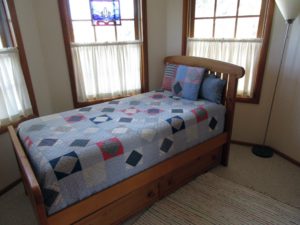
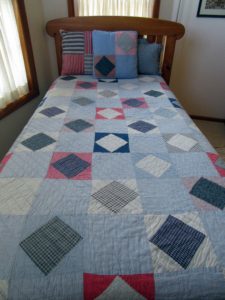
Nine Patch may be the quintessential plain patchwork pattern, but the bubble-gum pink lattice and jazzy prints provide kicky refreshment.
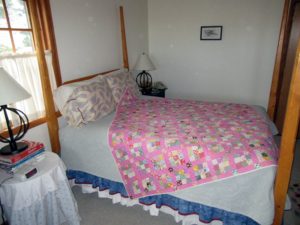
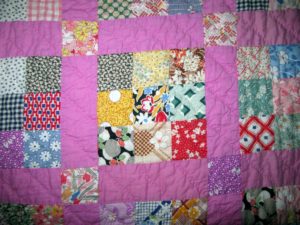
Experts will look at those prints and help me date this charmer…1950s?
Made me think of how Southwest artists translate the landscape into vibrant vistas. Like my favorite local artist, Paula Swain. Ran into her at Gallery 24, in Torrey, UT–right after I’d purchased one of her works. The husband and I had a really hard time picking the one we wanted! Here it is hanging on our wall so I can enjoy “Capitol Reefs Color” as I eat breakfast. Paula told me that she was raised in a family that went out to do plein air painting at every opportunity. Her father pushed her to use a realistic palette, and she resisted. It’s only since he passed away that she’s felt liberated to take artistic license and go wild with color, putting her own twist on the tradition of landscape painting.
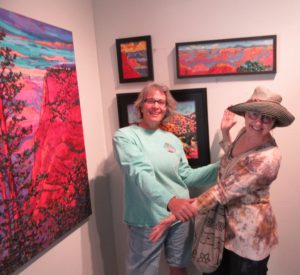
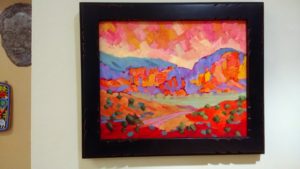


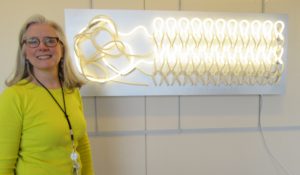 That’s the title of an exhibit Kevan Lunney put together at the Capital Health Medical Center in Pennington, NJ. This line-up of “rejuvenating work made of fiber and cloth” was sponsored by the hospital’s Art and Healing Committee plus Hopewell Valley Arts Council. And as the show just ended, I’m proud to share the fiber art pieces that rejuvenated my spirits with you here. Kevan is shown with her ground-breaking sculpture of neon and fiber, titled Repair.
That’s the title of an exhibit Kevan Lunney put together at the Capital Health Medical Center in Pennington, NJ. This line-up of “rejuvenating work made of fiber and cloth” was sponsored by the hospital’s Art and Healing Committee plus Hopewell Valley Arts Council. And as the show just ended, I’m proud to share the fiber art pieces that rejuvenated my spirits with you here. Kevan is shown with her ground-breaking sculpture of neon and fiber, titled Repair.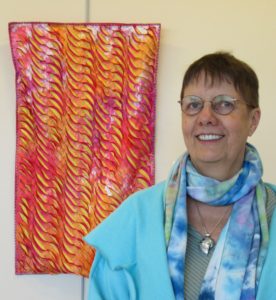
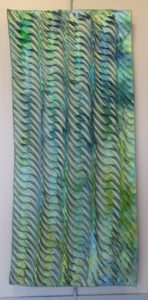
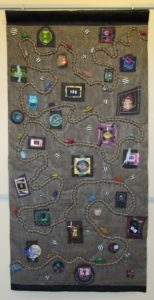
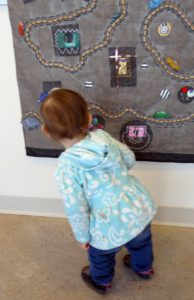
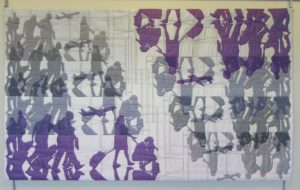
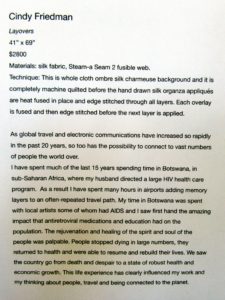
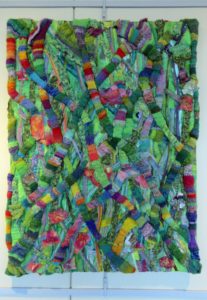
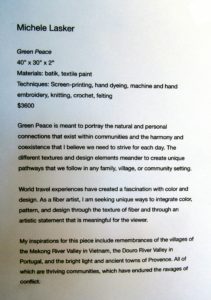
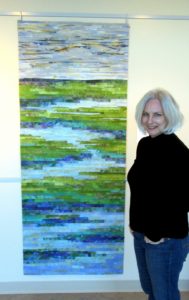
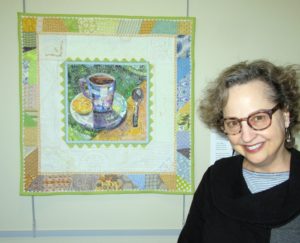
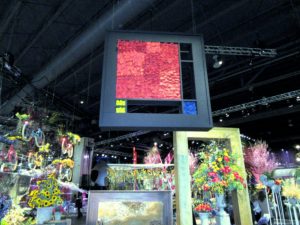 e Philadelphia Flower Show 2017 has vacated its enormous stage at the Convention Center, it is still the receiving bouquets for a master work. With Holland as the theme, classic Dutch artists were heralded with recognition of their signature styles as interpreted in flowers.
e Philadelphia Flower Show 2017 has vacated its enormous stage at the Convention Center, it is still the receiving bouquets for a master work. With Holland as the theme, classic Dutch artists were heralded with recognition of their signature styles as interpreted in flowers.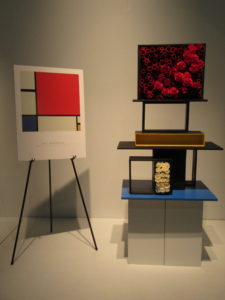
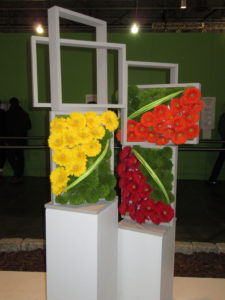
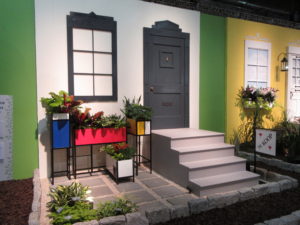 lters will see the work of Mondrian as an easy homage rendered in bright fabric, with black lattices à la stained glass appliqué. Gardeners will note that you don’t need to build vertical wall arrangements. Here, arrangers imagined the artist’s “Piet à terre” using planters that might have come straight out of Ikea, with paint added.
lters will see the work of Mondrian as an easy homage rendered in bright fabric, with black lattices à la stained glass appliqué. Gardeners will note that you don’t need to build vertical wall arrangements. Here, arrangers imagined the artist’s “Piet à terre” using planters that might have come straight out of Ikea, with paint added.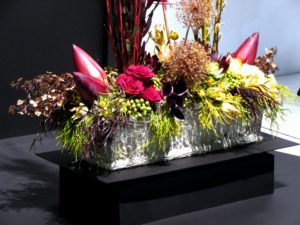
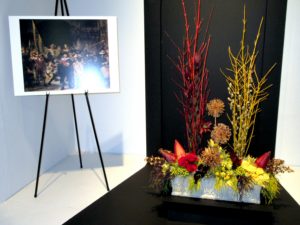
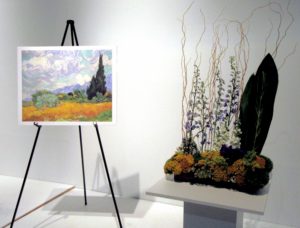
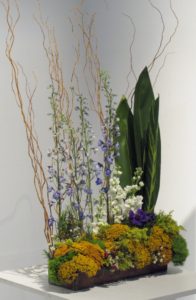
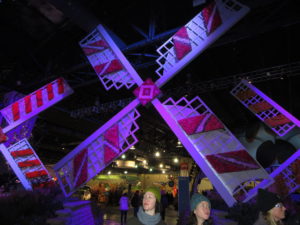 The best Flower Show ever! Which could be because it featured tulips, windmills, bicycles, wooden shoes, canals, tiles, and art. Could also be because there were NO crowds—snow, sleet, and ice kept them away.
The best Flower Show ever! Which could be because it featured tulips, windmills, bicycles, wooden shoes, canals, tiles, and art. Could also be because there were NO crowds—snow, sleet, and ice kept them away.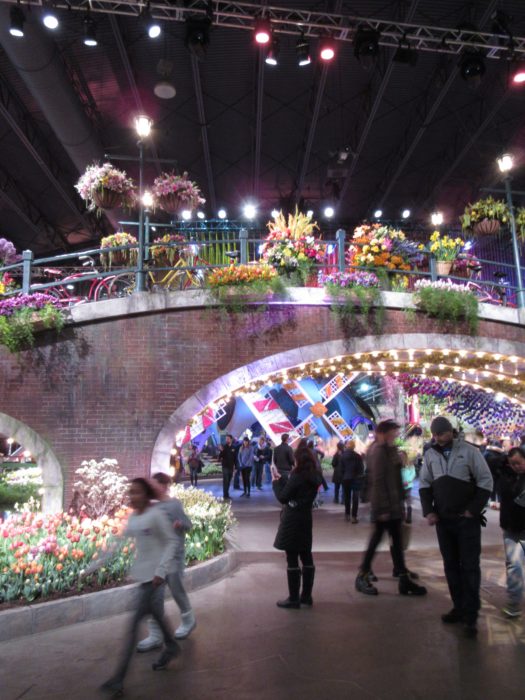
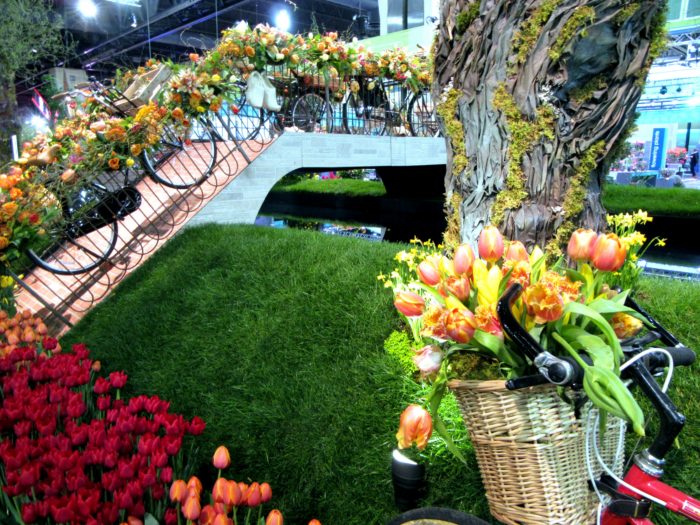
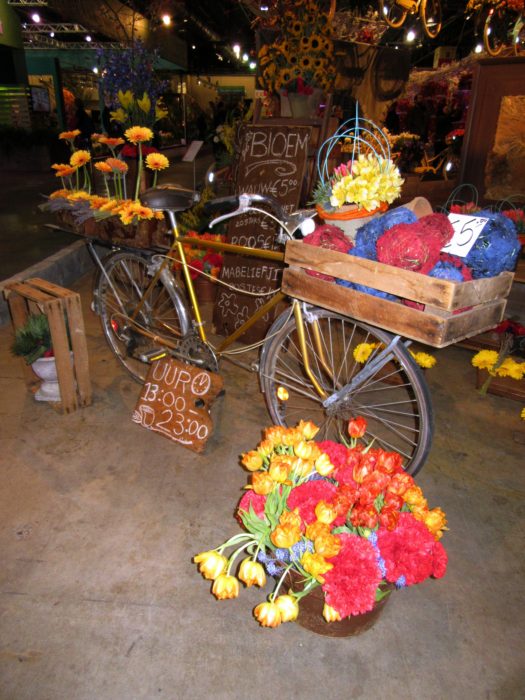 so clean. And the use of bike parts was oh-so clever.
so clean. And the use of bike parts was oh-so clever.


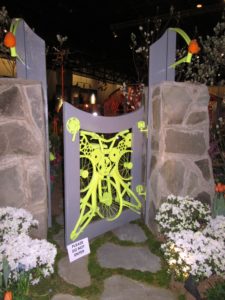

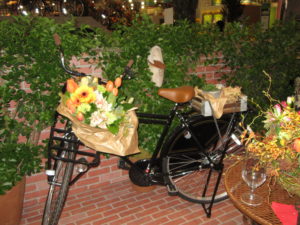
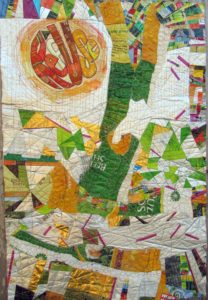 If you’ve read my last two blog posts, you’ll know that I’ve been working on a textile poster, pieced and appliqued out of trash–used packaging. A lot of the assembly came about in flip-and-stitch sections, with quilting to flatten everything down onto felt, then onto a backing.
If you’ve read my last two blog posts, you’ll know that I’ve been working on a textile poster, pieced and appliqued out of trash–used packaging. A lot of the assembly came about in flip-and-stitch sections, with quilting to flatten everything down onto felt, then onto a backing.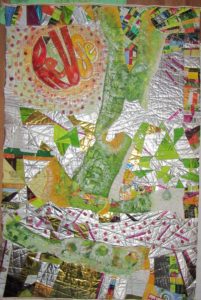
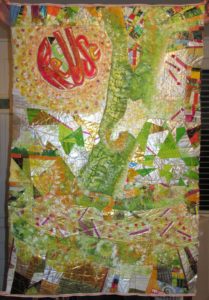
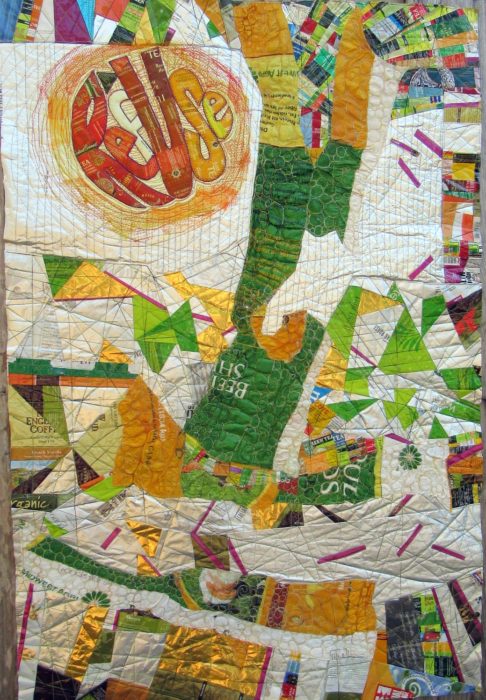
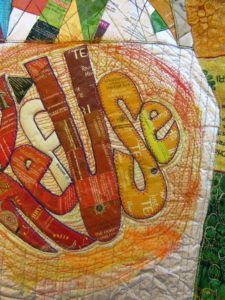 Yep, this is part of my ReUse series, made from my stash of trash. A green quilt, to be sure. The text riffs on the word Reuse, as in recycle. Ref-use, meaning garbage. And Re: Use, referring to our use of dwindling resources. Maybe even Refuse — to be a user, a conspicuous consumer.
Yep, this is part of my ReUse series, made from my stash of trash. A green quilt, to be sure. The text riffs on the word Reuse, as in recycle. Ref-use, meaning garbage. And Re: Use, referring to our use of dwindling resources. Maybe even Refuse — to be a user, a conspicuous consumer.